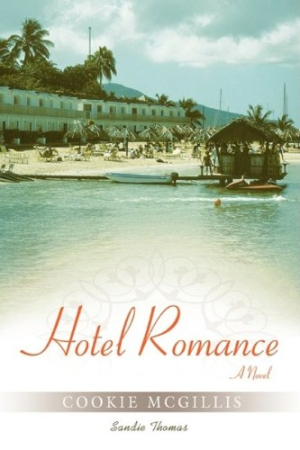Hotel Romance
Hotel Romance, a saga that crosses genre boundaries, is a world of monetary power, high-stakes manipulation, and passion—not a place for emotional wimps. Two bundled stories, this glitzy fiction delves into the intertwined, exciting lives of three brothers: Rafe, Dale, and Zane. Rafe takes Book One, while Dale and Zane take Book Two. In reality, this is one mainstream novel.
Entrepreneurs with drive and spirit, these ambitious men build hotels. Their overwhelming desire to succeed, along with their complicated personal lives, are distinguishing characteristics of this Dynasty-style plot. Propelled by negative motivations (competitive jealousy), as well as positive needs (love and comfort), Hotel Romance allows minor and supporting characters to detract from the quality of the plot.
Relying heavily on fast-paced dialogue and breakneck narrative, often incorporating details that could have been left out, the story barrels ahead, while keeping the reader updated on everything from the state of a business affair to the state of a troubled mind. “Molly left her suite of the hotel the following morning to get to work on the work that had been put on hold until she returned. She left Dale sleeping, grabbed a cup of coffee and went to the office.” It would have been less exhausting to simply write, “Molly left.”
Though the book realistically portrays how people frequently behave in the bedroom and boardroom, Thomas’s loose writing technique, which tends to ramble through personality evaluations, can be tiresome. For example, the novel is unnecessarily degrading to Zane, who the reader may expect to remain a person of integrity. Regardless of the relevant nature of his relationship with the woman in question, his superficial and degrading outlook in the following passage may not sit well with an educated reader: “Rafe had already called and instructed him to hire her no matter what she looked like. His big brother had him pegged all right. Looks were very important to him and his excuse was that it was easier for the guests to deal with someone attractive and not someone ugly as sin.”
Despite the rapid, off-in-every-direction delivery of the plot, the book is tightly edited, at least to the extent that it is free of common errors. The cover depicts a sandy beach near a small hotel, an appropriate image, but the back-cover blurb is somewhat slapdash with a brief bio that verges on being too personal. Strangely, without explanation, two names are used for the author: Sandie Thomas and Cookie McGillis.
Reviewed by
Julia Ann Charpentier
Disclosure: This article is not an endorsement, but a review. The publisher of this book provided free copies of the book and paid a small fee to have their book reviewed by a professional reviewer. Foreword Reviews and Clarion Reviews make no guarantee that the publisher will receive a positive review. Foreword Magazine, Inc. is disclosing this in accordance with the Federal Trade Commission’s 16 CFR, Part 255.

